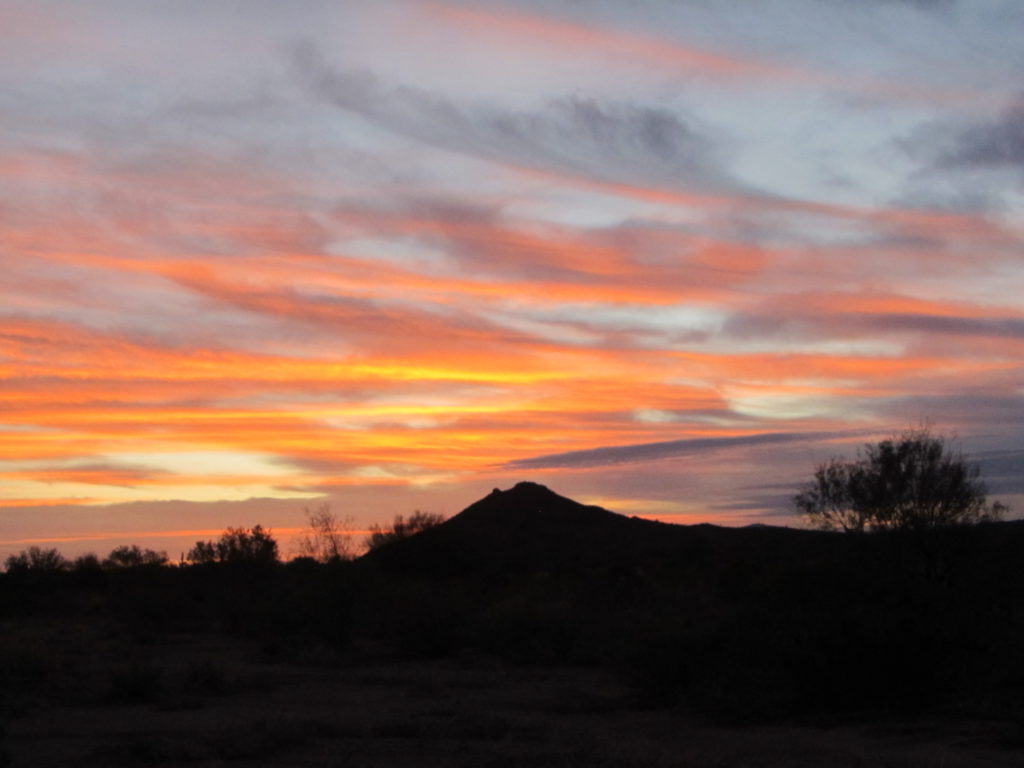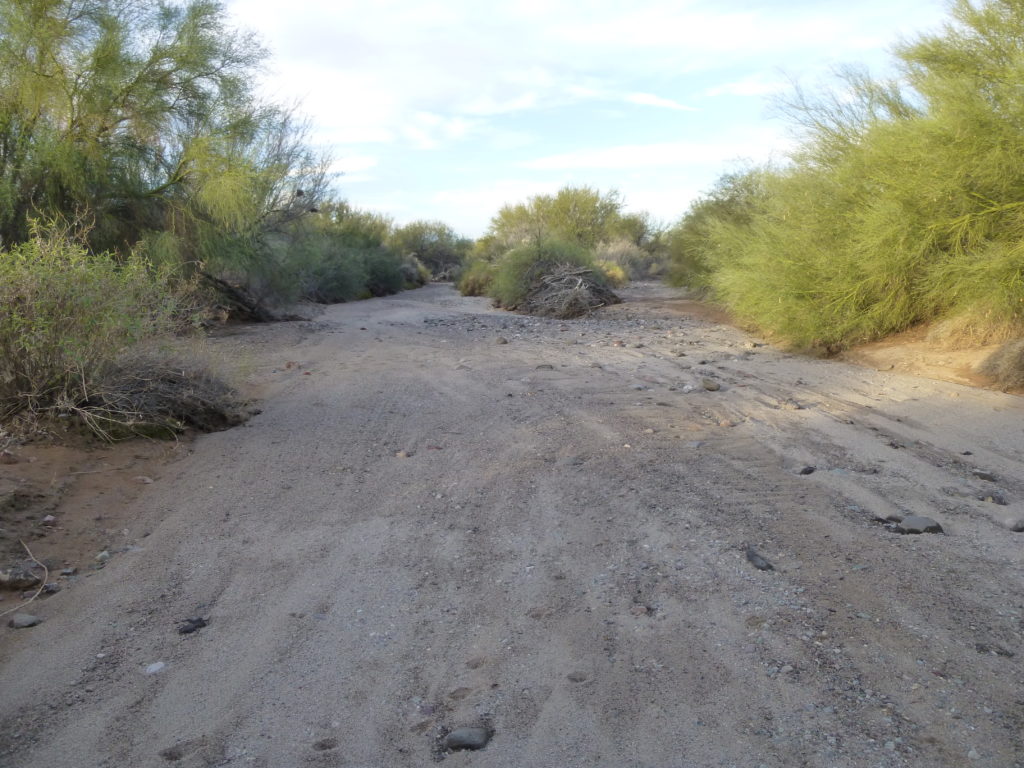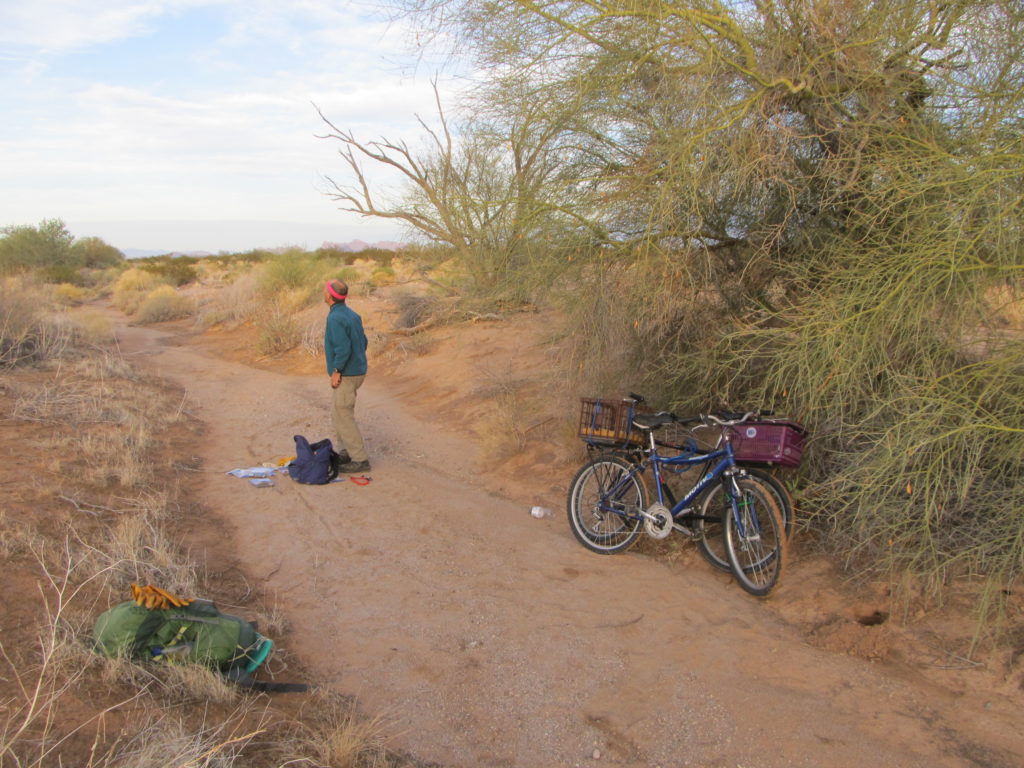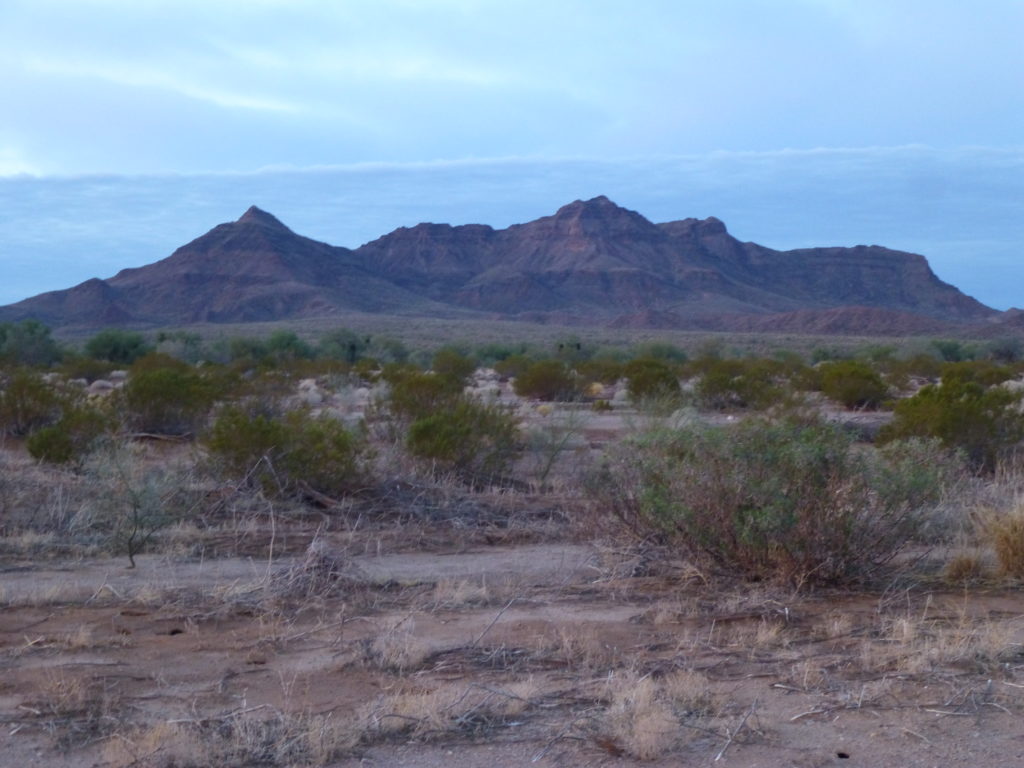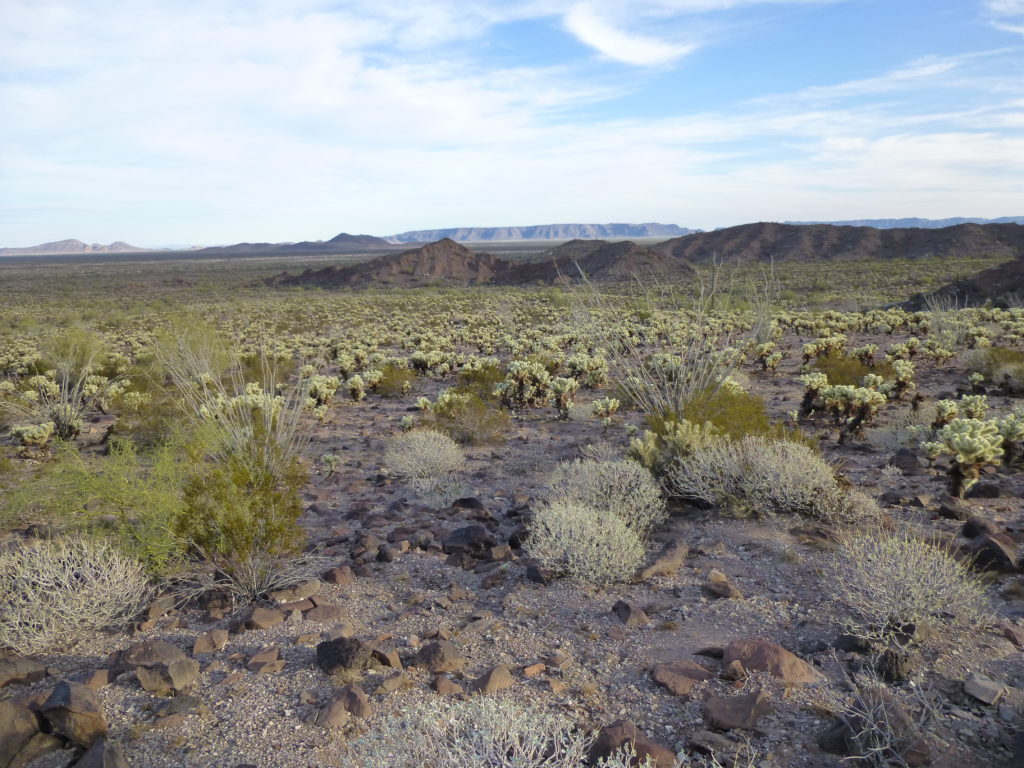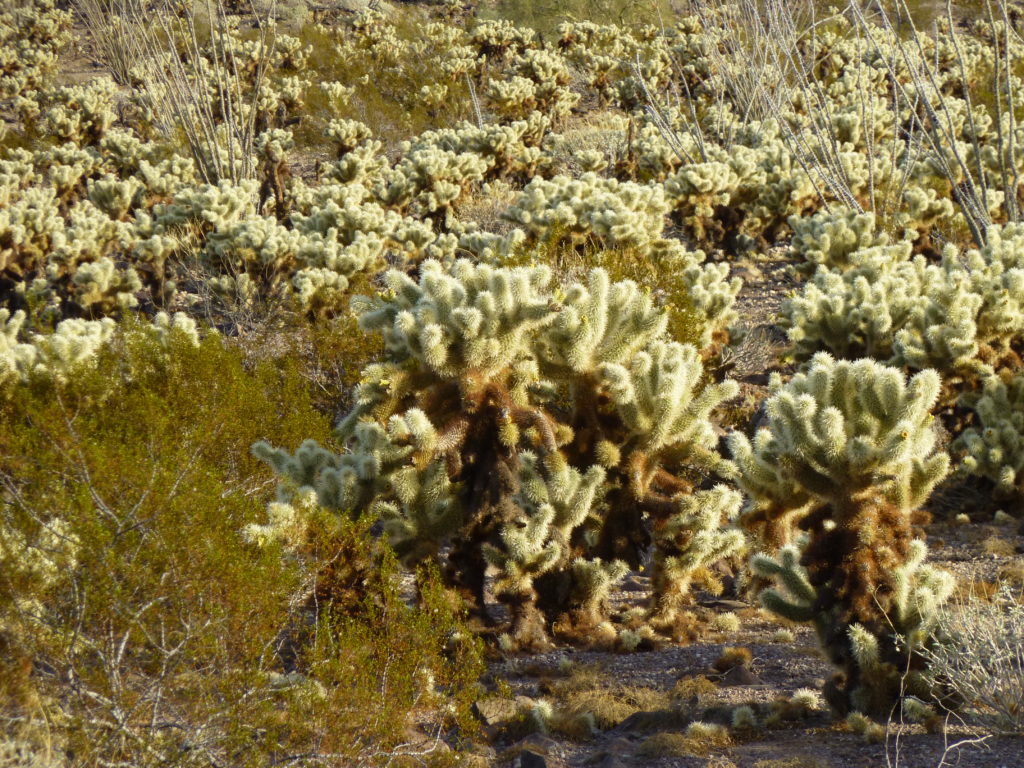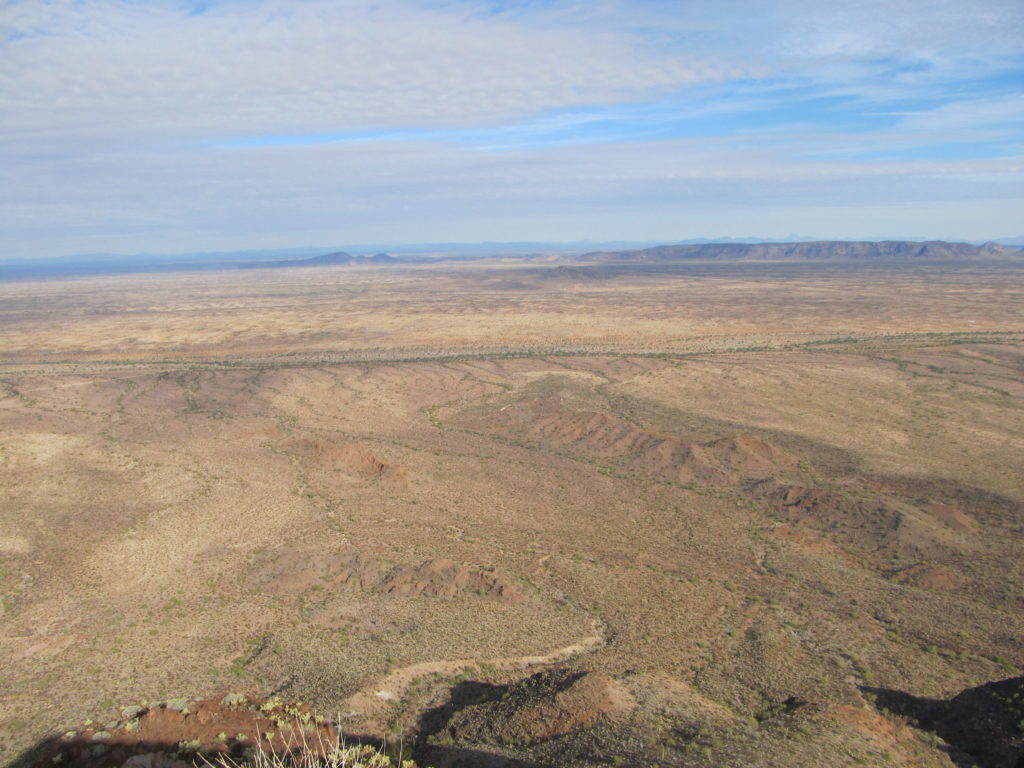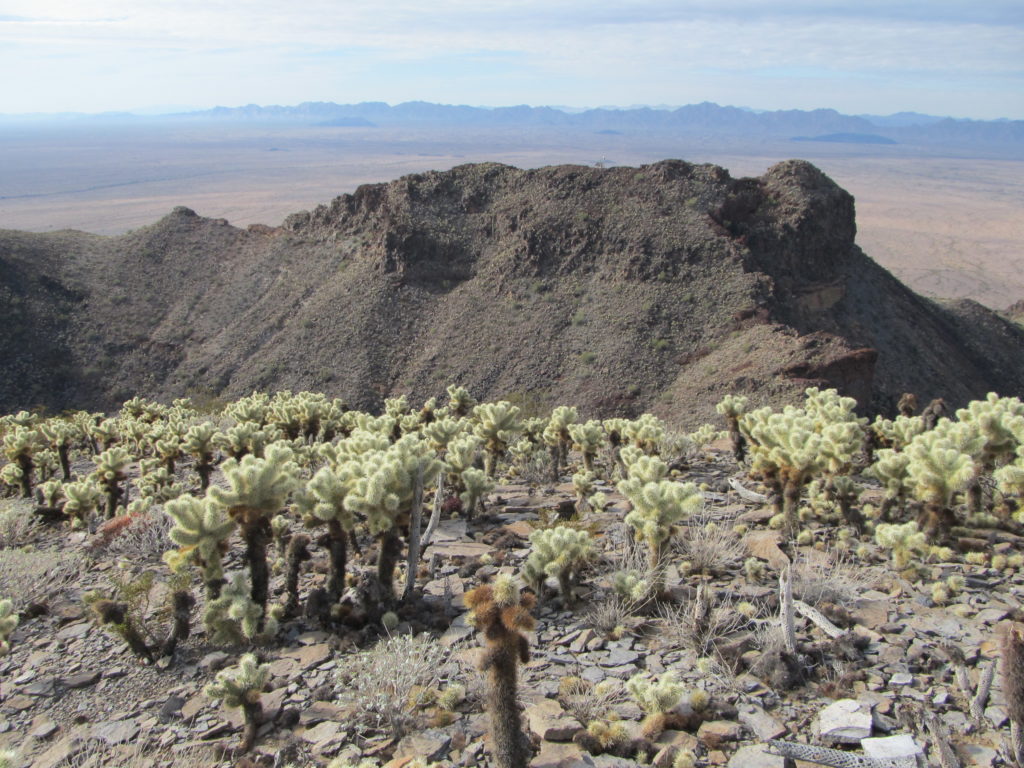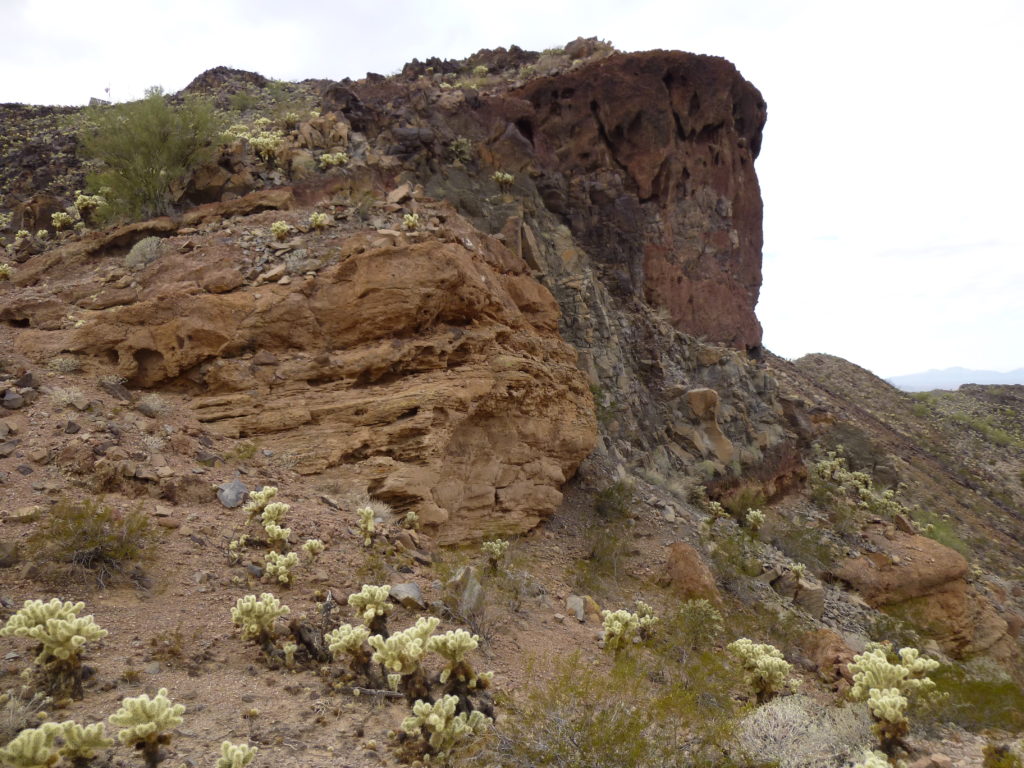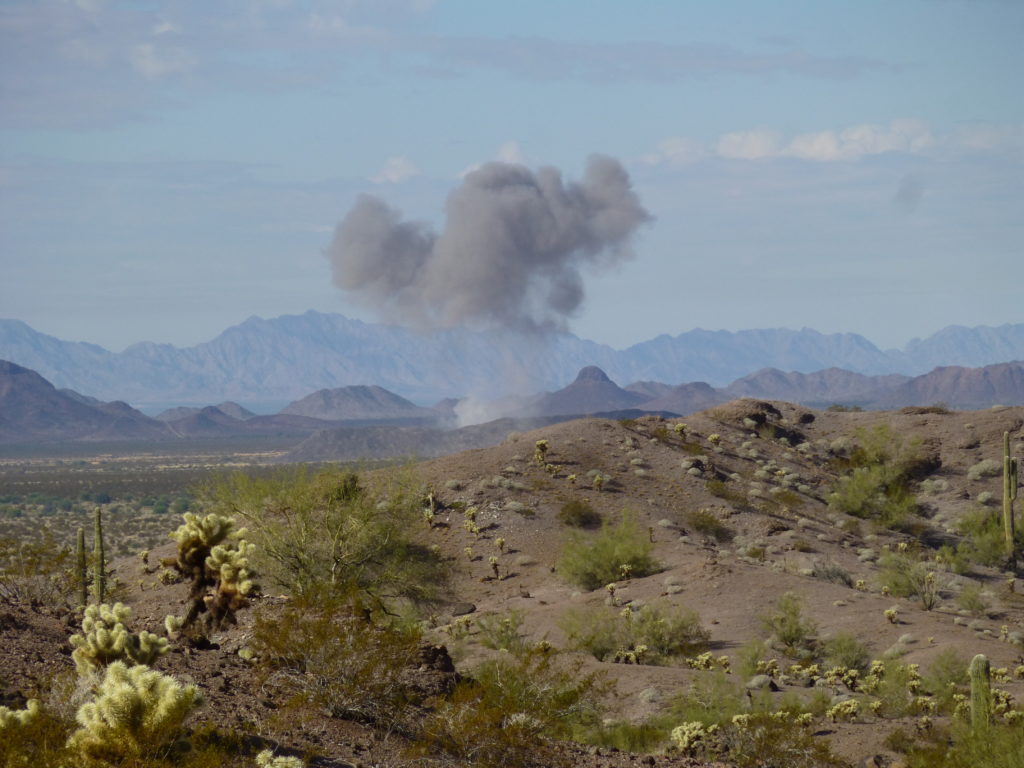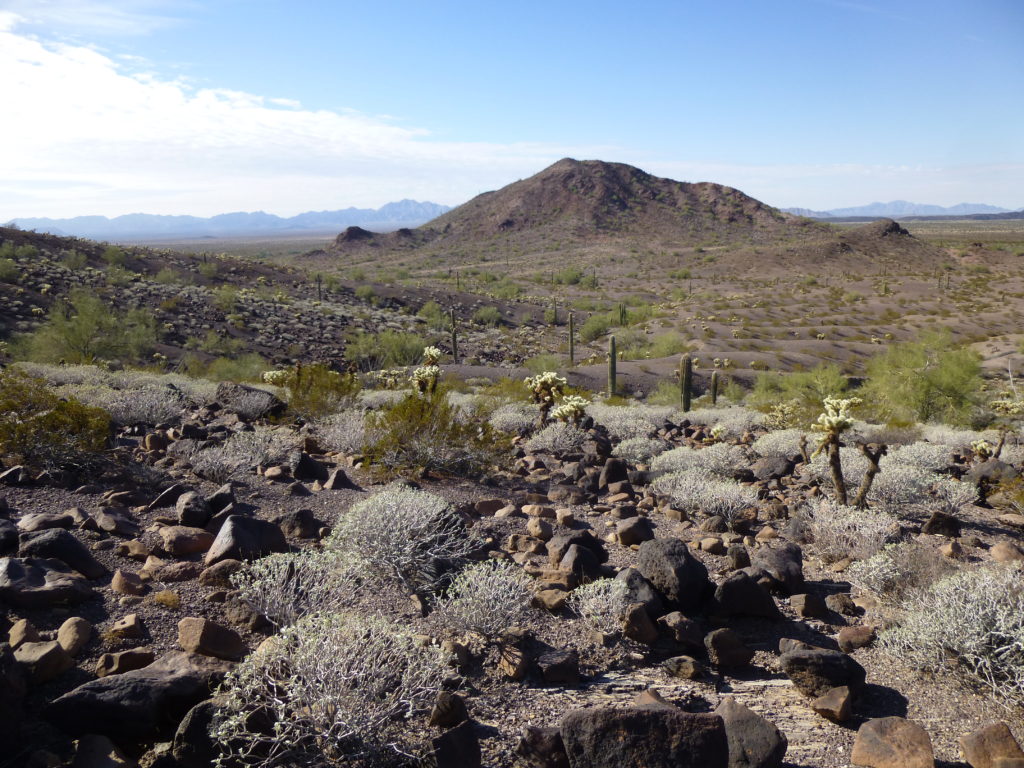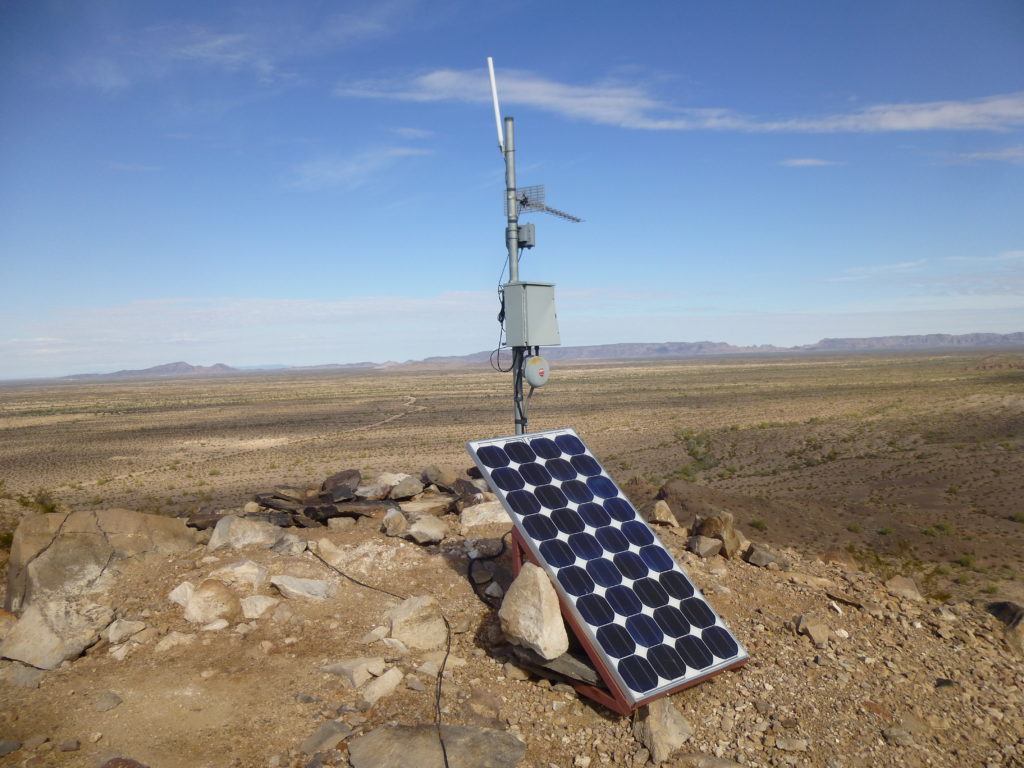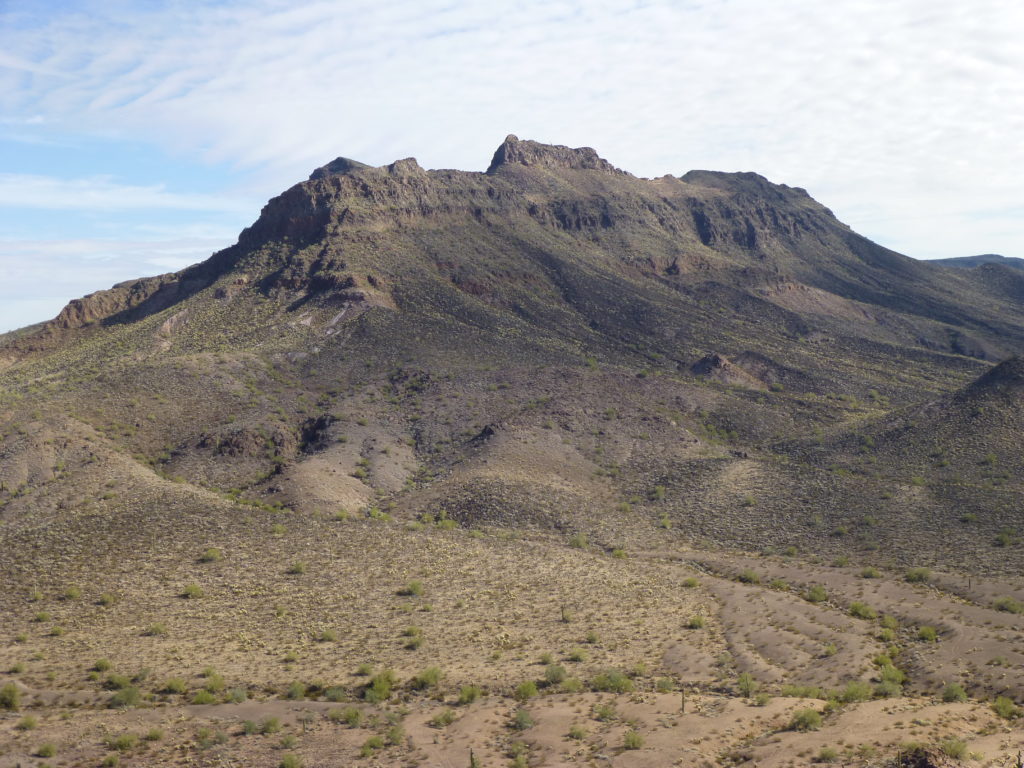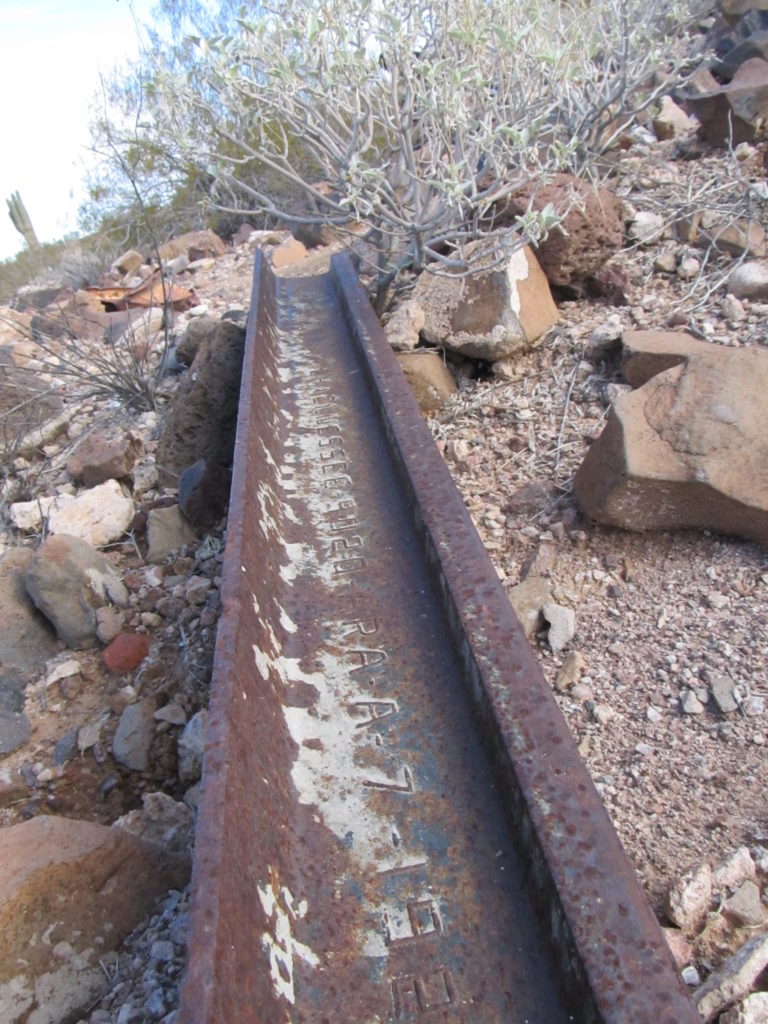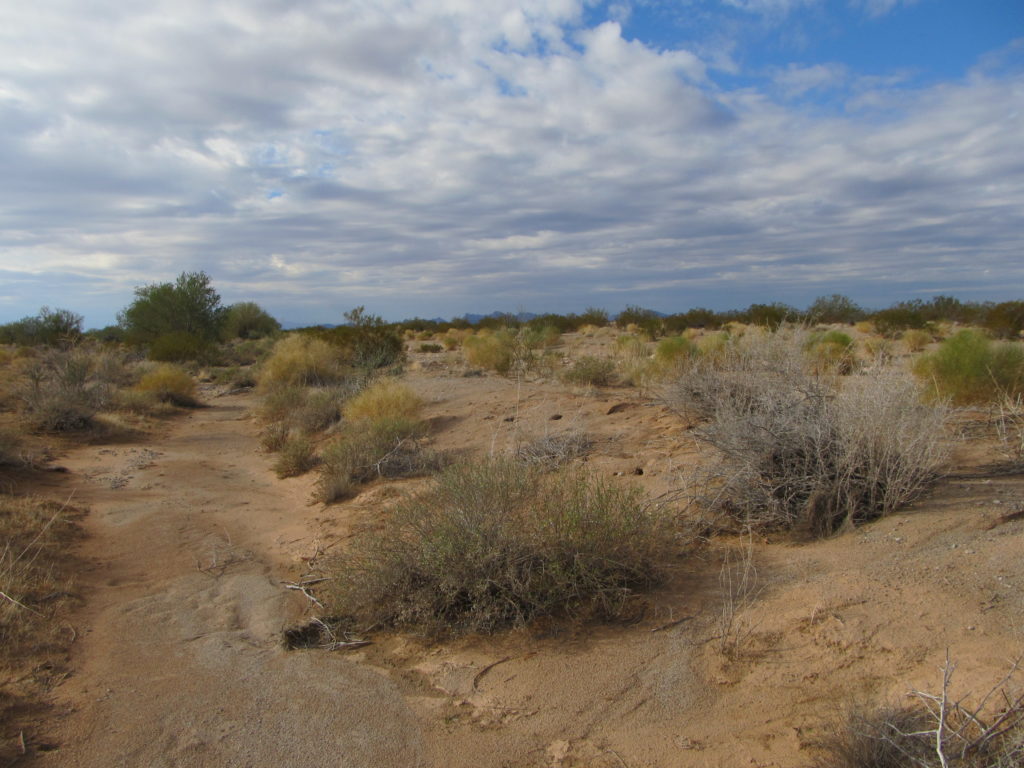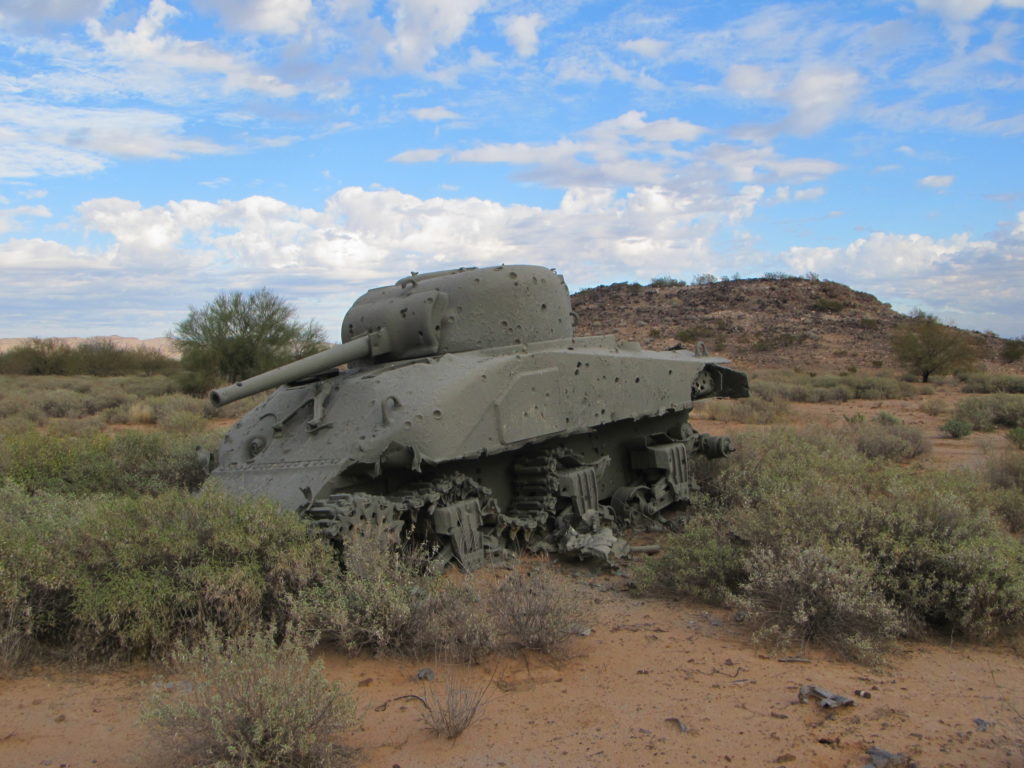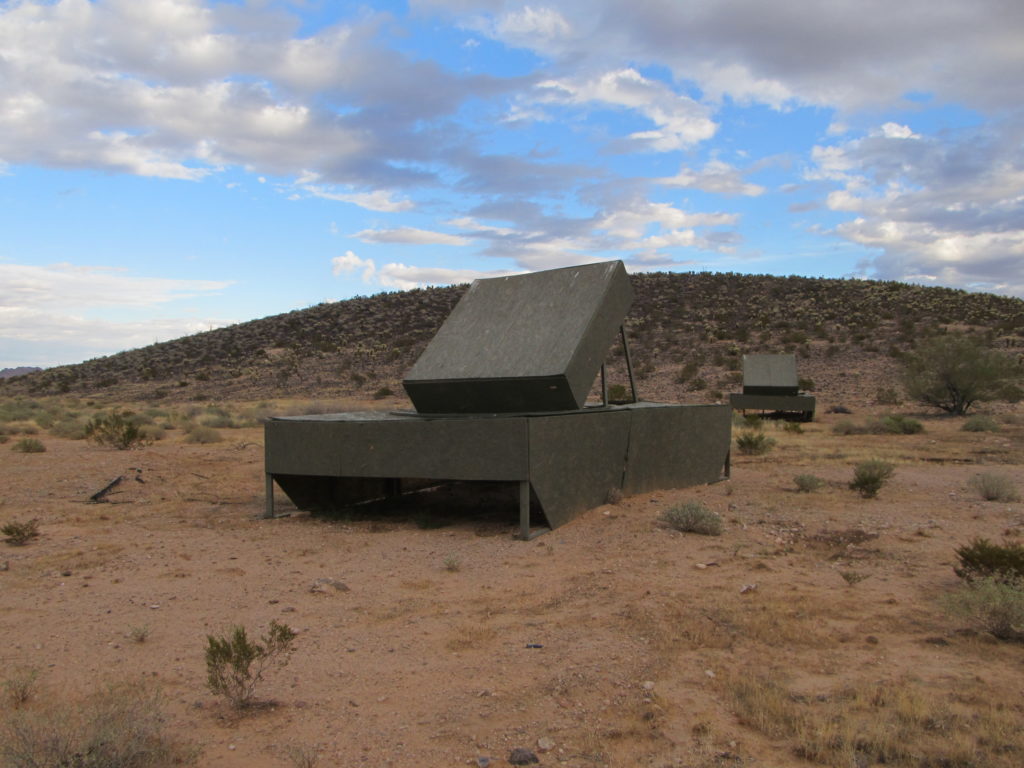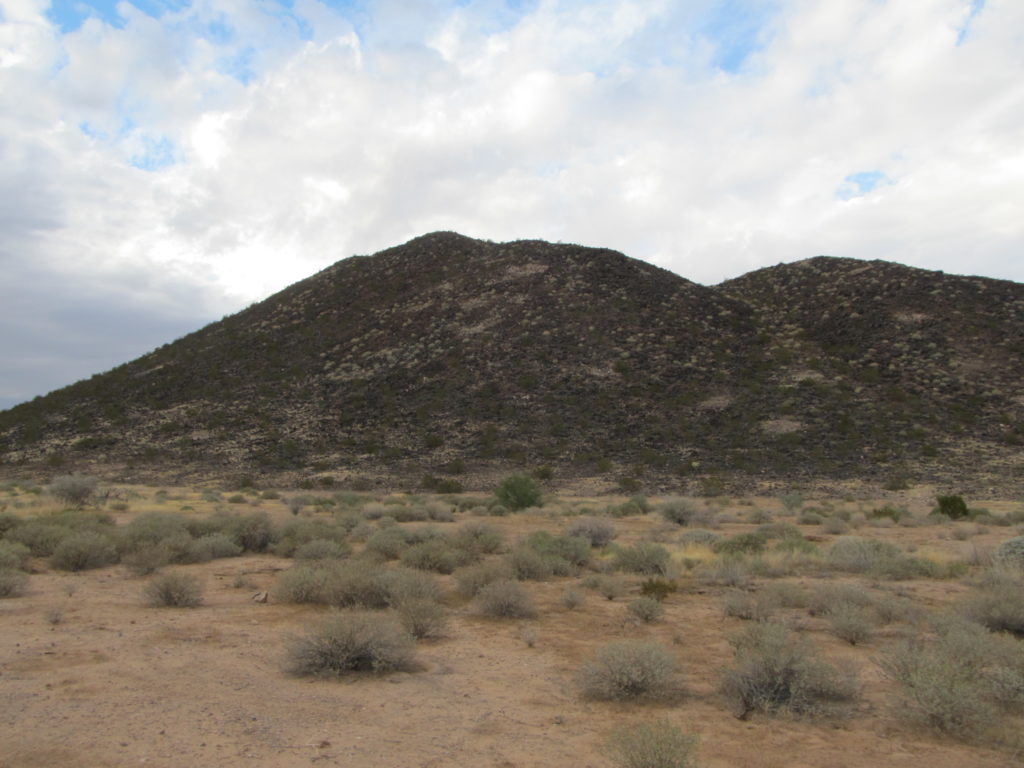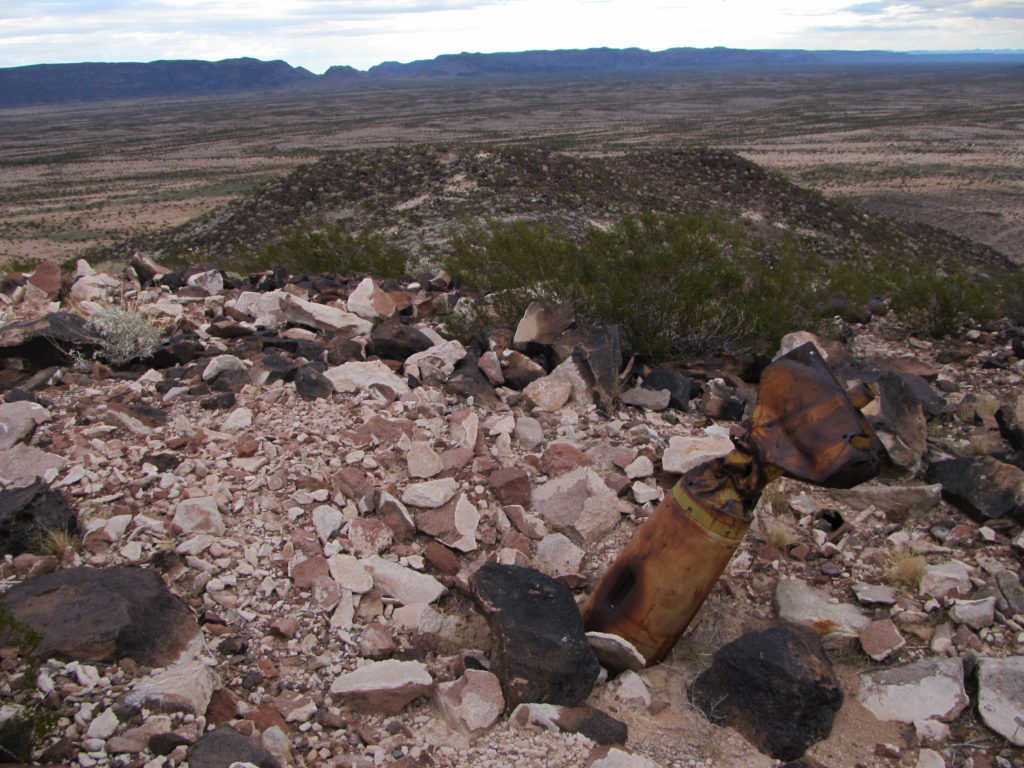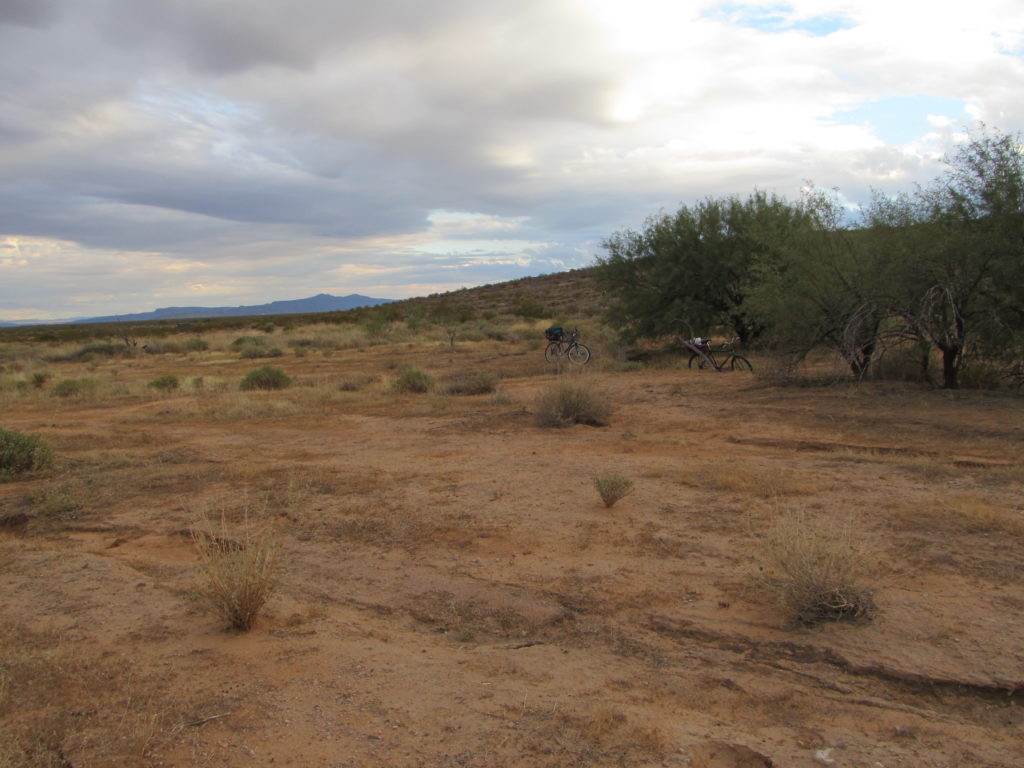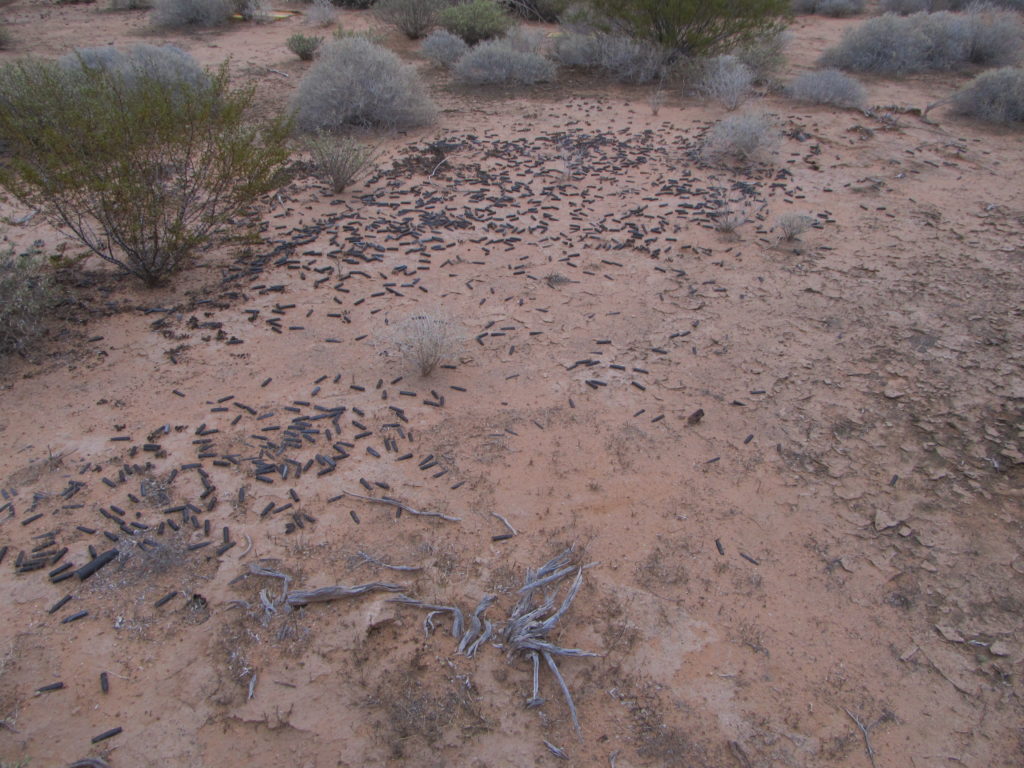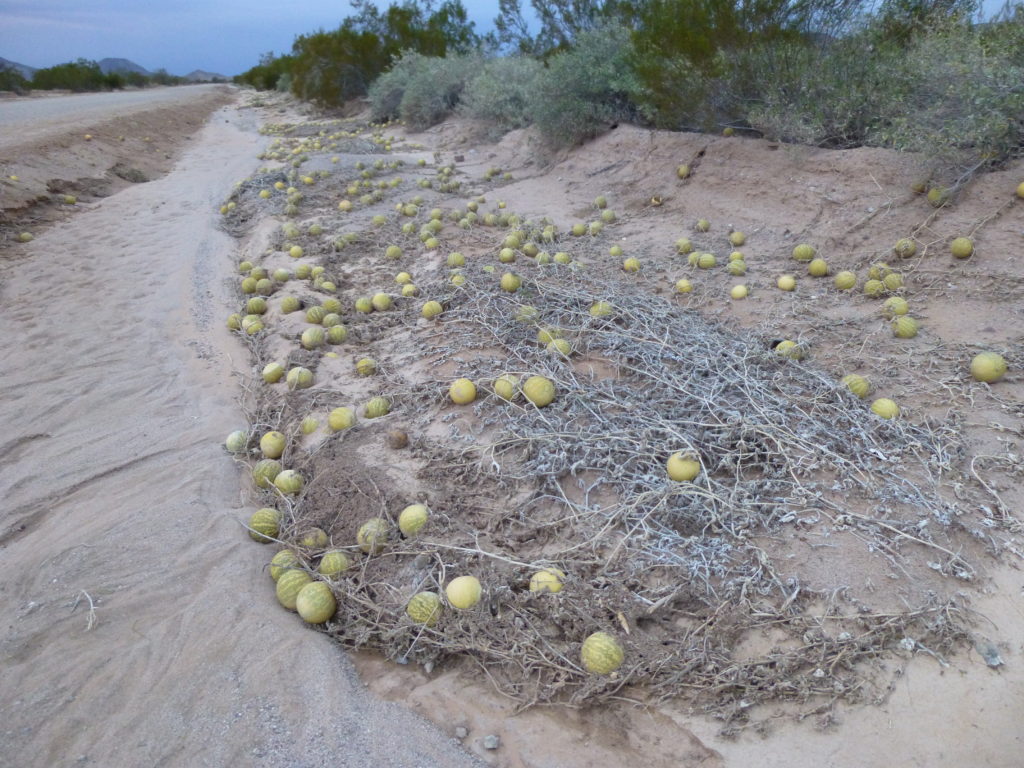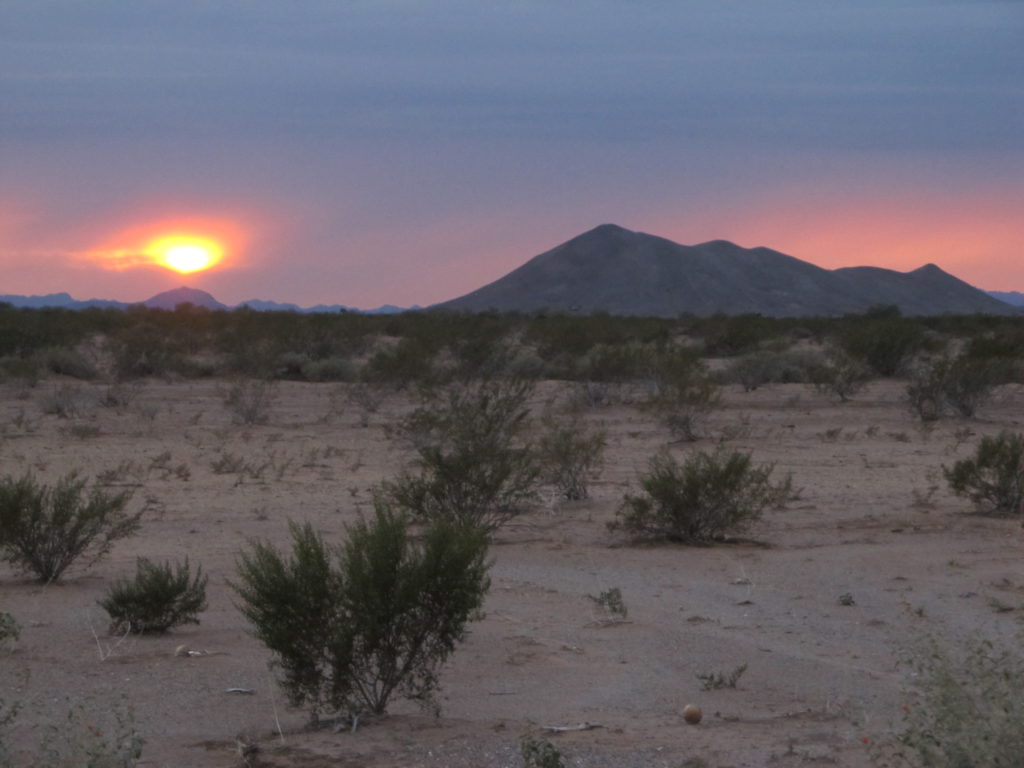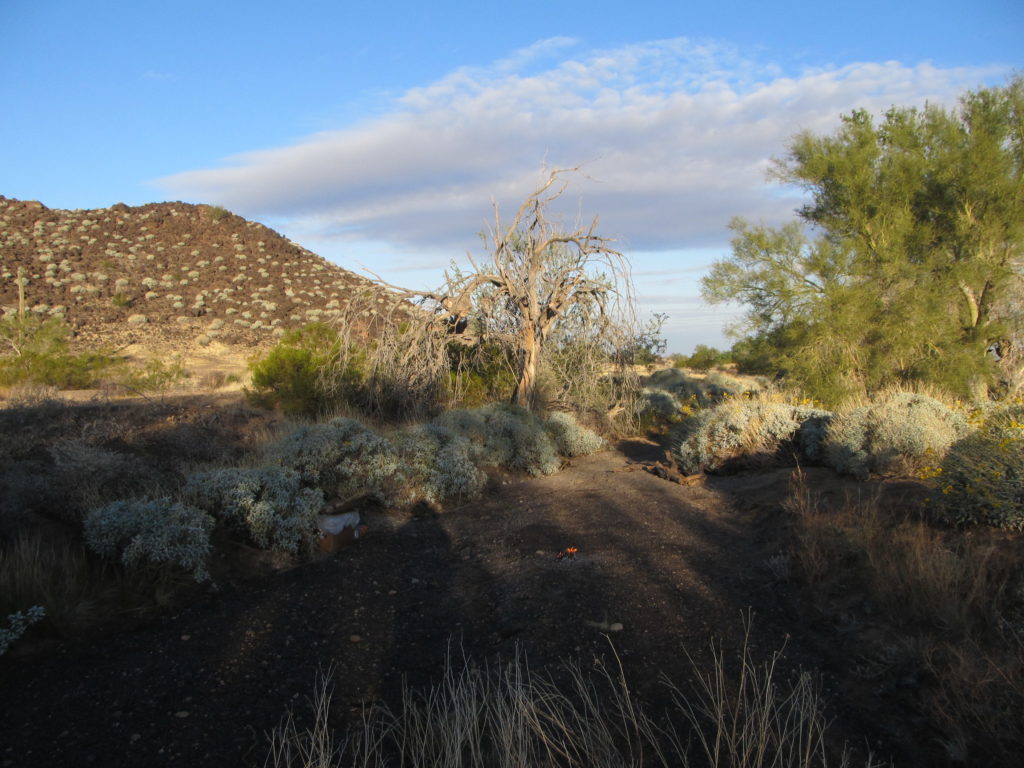Be sure to read the previous 3 installments of this story, all dealing with Stealth, just published on this site in order to get the most from this one.
Luke and I had each set 3 alarms on our cell phones, minutes apart, so there’d be no way we could oversleep. At 3:00 AM, camp sounded like an orchestra warming up. We overdosed on oatmeal, so much so that we both swore off of it forever. As always, it took an hour to be completely ready to leave, but leave we did, at 4:00 AM. We biked over to the road and began our journey. It was still hours until sunrise, so naturally it was as dark as a thief’s pocket.
This military road was wide and well-graded. During the 4 days since we’d last ridden on it, the passage of many heavy vehicles had compacted the surface even more, making for an easier ride. We passed many junctions, all well-marked, but none of those side-roads interested us. Making better time than expected, we reached a low pass and found ourselves on a road that was so well-engineered, it was like a dirt freeway. We easily kept up an 8-mph pace, and the miles were passing quickly. At a convenient spot, we hid half a gallon of water, then moved on.
Luke must have been paying closer attention than I, or maybe it was just because he was out front, but at one point he stopped and shouted that someone was coming! Sure enough, in the distance we could see the glow of headlights coming towards us from behind a low rise. We hopped off the bikes, hoisted them up and over a large earthen berm on the side of the road and fled into the desert. There wasn’t much in the way of hiding places, so we just laid the bikes down flat and crouched with them. It took a few minutes, but the vehicle finally reached us – it was driving very slowly, maybe 15 or 20 miles an hour, as if the driver were looking for something. He didn’t see the mess of tracks we left on the berm, so kept on going. Once he was a long way off, completely out of earshot, we slowly made our way back to the road.
We pedaled like hell into the night, covering more miles, but always on guard – there was no way of knowing when someone else might come along, or even come up behind us. Finally, we reached an important junction, one which, once beyond it, we felt we could breathe more easily. It was still completely dark. Our goal was to ride along an old road to get over closer to our first peak, but as soon as we started to ride it, out tires sank into sand – we had to get off and walk. There was no danger of anyone finding us now, we were so far off the beaten path.
While we marveled at what Mother Nature had done here, we heard another noise – vehicles approaching. We turned off our headlamps and looked back the way we’d come. Headlights, engines grinding away – vehicles moving on the road we’d left a bit earlier. They were obviously heading in the direction we’d come from in the night. Once they receded in the distance, we continued on, still walking the bikes as the sand was too soft and deep to ride.
Besides, what should have been a decent road was just a wide swath of sand. It was obvious that the torrential rains of a week ago had completely transformed this part of the desert. Water had run downhill, picking up sand as it flowed along, filling in the old road bed completely level, and spilling out on to the surrounding desert. As we walked the bikes, there was no way we could see any trace of the old road – this photo shows what may or may not have been it.
By the time we stopped, the sun was up and it was 8:20 AM. We locked our bikes together so nobody could steal them, then hid some extra gear and food nearby, stuff we didn’t need for this first climb of the day. The bikes themselves, we didn’t bother to hide – first of all, nobody was out there; second, with the bikes locked together, nobody could take or use them. It would take a hacksaw or bolt cutters to sever the strong cable binding the bikes, and never before in history had any Bad Guys carried such tools with them while walking across the desert.
Here’s a view towards our peak, the biggest one of our trip. This is what we saw from the bikes. The summit is just to the right of center.
Finally, we set out on foot towards our mountain. A couple of miles of walking across pristine desert brought us to the base of the climb.
The next 900 vertical feet was a climb up gullies, and that put us on a saddle between the two highest points of the peak. Luke and 2 friends had been the first climbers to reach this summit 12 years earlier, and nobody had been back since. For some reason, I thought the west summit was the higher one – I started out for it, and Luke politely reminded me that that’d be a waste of time, it was the other one that was higher! Oops. Luke had warned me that this summit was covered with teddy-bear cholla cactus, so much of it that it was still a powerful memory. Man, he wasn’t kidding. It was as bad as anything I’d ever seen in 30 years of desert climbing.
If you’ve never been stuck by one of these TBCs, then you haven’t enjoyed the true Sonoran Desert experience. Oh, the pain! We had the final 300 vertical feet to climb through these guys, and it was done ever so slowly, like a slow-motion ballet. We tip-toed through this mini-forest, sometimes sideways, sometimes backwards, but oh-so-carefully. It was nerve-wracking, but we did it, and stood on the summit at 10:30 AM. We signed in to the only register we found on the entire trip, the one left by Luke et al in 2004. The next photo shows the view across the desert – our camp is beyond the long mountain ridge on the right side of the image, insanely far away.
Here’s another view from the top, a look over to the nearby, lower summit.
There was some interesting rock down by the saddle.
All day long, we’d been checking out west to keep an eye on the incoming weather, and so far there’d been nothing worse than a few bands of high clouds. Nevertheless, the forecast was for a real shit-storm to hit that evening, so we were a bit nervous. After a short stay, we tip-toed back down through the satanic forest to the saddle, then down by another route to the foothills below. We reached a low saddle, by now in bright sunshine, and were walking to our next peak when it happened. The loudest boom I’ve ever heard rocked our world – it was intense, you could feel the concussion inside your chest. It caught us completely off guard, and brought loud exclamations of shock and awe. A short distance away, a grey mushroom cloud rose into the sky – an F-16 had just dropped a huge bomb.
This was a truly amazing experience, one you had to be there in person to appreciate. Although the explosion had been 4.3 air miles from us, it seemed much closer. We had one more peak near there to climb, and it excited us that it was in the direction of the explosion.
Over a few small hills, a quick climb and there we were with a front-row seat on what was to come. During a leisurely lunch, we kept hoping for a resumption of the bombing – I mean, we were so close, we’d never get another chance like this. Sadly, it never came. Even though there was military communications equipment on the summit, we still left a register.
Here’s a look back to the beautiful peak we’d climbed earlier.
Our time was up, we had to move on, so sadly we dropped down to the desert floor. Near the bottom of the peak, we found the remnants of some old mining activity – this piece of track was dated 1921, decades before the bombing range was created.
We walked a military road for about 3 miles (we got to within 3.2 miles of the bomb site, but no closer), and a bit of cross-country too, and arrived back at our bikes. They were untouched, but something wasn’t right. My stuff that I had hidden under brush was scattered all around. For a moment I thought the worst, that somebody had walked through there and found my stuff. But no, Luke and I are experts at hiding things, and no human would have found it. Upon closer inspection, all of the plastic bags had been torn open – tooth and claw marks were everywhere. That was a relief, it had been an animal and not a human. All that the mysterious creature had taken was a bag of raisins, and it needed them more than we did. None of the bike gear had been harmed.
It was 2:20 in the afternoon – we had been away from the bikes for 6 hours and had covered almost 8 miles. It felt warm, and although patchy clouds were still coming through, the day was still mostly sunny and bright. We still had a long way to go, and miles of it were going to be tough: cross-country, over unknown ground. Might as well get started. We had to walk our bikes for a while, through country like this – it was all sand and hummocks, totally unfit for riding as it was so soft.
After a while, we reached a good military road – this, we followed for some time, then reached yet another road which we recognized – we’d had some experience with it in another remote mountain range the previous year. Although it wasn’t going in the direction we wanted, it was good biking so we started to follow it. That didn’t last too long, though. Up ahead, we saw more vehicles moving hard by the road we were on, by another military facility with some towers. Yikes, time to get off this road, and now! We left it at right angles and started across the open desert – it’s lucky we hadn’t been seen, they’d been awfully close. We didn’t even take any pictures – you know, the heat of the moment and all that.
We set our sights on a gap between 2 low hills in the distance. The biking was difficult, our tires often sinking in to the softer places in the desert soil – plenty of quad-buster places. Clouds were moving in from the west – a dark, solid bank – it looked like our luck was running out. In places, there were so many metal fragments littering the ground that we had to get off the bikes and walk – our fear was that a sharp piece of exploded munition would puncture our tires. We reached the gap, passed through it, then headed west to park the bikes in a quiet valley. The air was filled with a sense of urgency. As we crossed a low saddle to the next valley, we saw a lone bighorn sheep running along the desert floor to the west, right at the base of our next and final peak. We were surrounded by all kinds of military targets. There were real ones, such as this old tank.
And there were many wooden mock-ups such as these, which looked like they were in good shape.
At last, we stood at the base of our peak.
This one had given us pause for a long time – take a look at this satellite photo. All of the volcanic rock covering the peak is black. But look at all of the white dots – have you guessed what they are? If you said bomb craters, you’d be correct. Most of the surface is covered by them – the black rock has been blasted to oblivion and shows as white.
It was high adventure to climb this peak. Luke and I have been tip-toeing around un-exploded ordnance for decades, and we knew how careful we’d have to be. Some of these large bombs hadn’t exploded, and they were the ones we’d try not to step on or even get near. Let me point out a few things in this next photo. Up close is an area of white rock, where a bomb has exploded. That thing in the middle of it is where a later bomb hit, but for some reason embedded itself in the mountain and didn’t explode. A few hundred yards away, lower down the black slope, are white bomb craters all over the place – I count at least a dozen of them in that small area.
At 4:22 PM we walked on to the summit, and immediately found the benchmark. It had survived the bombing, un-visited and forgotten since its placement in 1962 by the Army Corps of Engineers. We filled our a register, the quickest one ever, and placed it as the first drops of rain hit us, driven on the west wind. You would have been proud of us, how quickly we made it back down the peak, over the saddle and back to our bikes.
Once there, though, any peaceful, easy feeling was gone. We hopped on board and rode old roads, trying to get back to the super-road of early morning. It took us another mile, with some cross-country riding thrown in, to get us there. En route, we came across this area of spent shell casings, thousands of them.
A bit farther, and we hit the road we were seeking. That’s all we needed, and away we went. A strong wind was hitting us from the side, making progress difficult. As anxious as we were to beat the rain, a few things caught our eye along the way. The first was this wild squash, commonly called coyote melons – pretty to look at but they taste awful.
And we couldn’t resist this fleeting sunset, the last bit of brightness before the advancing storm.
We made a quick stop to collect the 2 quarts we had hidden in the darkness of early morning, then hurried on. More miles passed, then came a mile of uphill – so great was our haste that we barely slowed down. As the last of the daylight faded, it started to rain. Driven by the wind, the drops pelted us from the side. It wasn’t worth fighting, so we stopped and put on rain-jackets, then continued. In the headlamps’ beam, the drops made everything a blur and streaked our glasses. On we rode into the night, getting wetter by the minute. Finally, we had gone as far as we wanted on the road, and turned off towards our camp. Luke’s GPS coordinates guided us right to it. We were glad to be there, although wet and miserable – it was 6:40 PM.
Shortly after we arrived, the rain stopped and didn’t start up again. We got out of our wet clothes, settled in a bit, then cooked our last supper of the trip. The cloud cover broke up and stars appeared. The satellite forecast had been right on – the rain had arrived right on schedule. Fortunately, it had been of short duration and not too intense a downpour. What a great day! Three peaks climbed, 21.3 miles on the bikes, 8.6 miles on foot. This was the only night we didn’t make a campfire – everything was wet, and we just wanted to crawl into our sleeping bags.
The next morning, we slept in, then took a long while breaking camp. This had been a good home for us – it had kept us well-hidden and allowed us to keep climbing. We left some things behind: 4 gallons of water; some food; a few other things that might help any passerby survive a bit longer.
It was almost 9:00 AM by the time we rode our bikes out of camp and over to the road. All we had to do now was ride out of the area and back to a place where people were allowed to be. I doubt we’d gone a mile before we heard the sound of a large vehicle. Now knowing the area as well as we did, we concluded that the truck was about 5 miles away – sounds can carry a long way in the desert. Remember that huge puddle blocking the road a week ago when we came in? A week of sunny weather had pretty much dried it up, and we were able to ride through on the edge and not detour out into the desert. There’s not much more to tell – the hours passed, the miles passed, and eventually we left the area and returned to our vehicles and then home.
Here’s a summary of our adventure:
Duration – 7 days, 6 nights
Climbing days – 5
Peaks climbed – 14
Vertical feet climbed – 10,175
Distance traveled by bike – 87.2 miles
Distance traveled on foot – 30.3 miles
Close calls – too many
It had been a great trip, with more adventure than even we had thought possible. We had taken stealth climbing to a whole new level, and it’s because of the audacity of what we did that I cannot reveal to you the names, locations or any other identifying information about where we were. It would be fun to spill the beans, but that’s not likely to happen for a long time. Hey, thanks for listening – I hope you enjoyed the journey.

